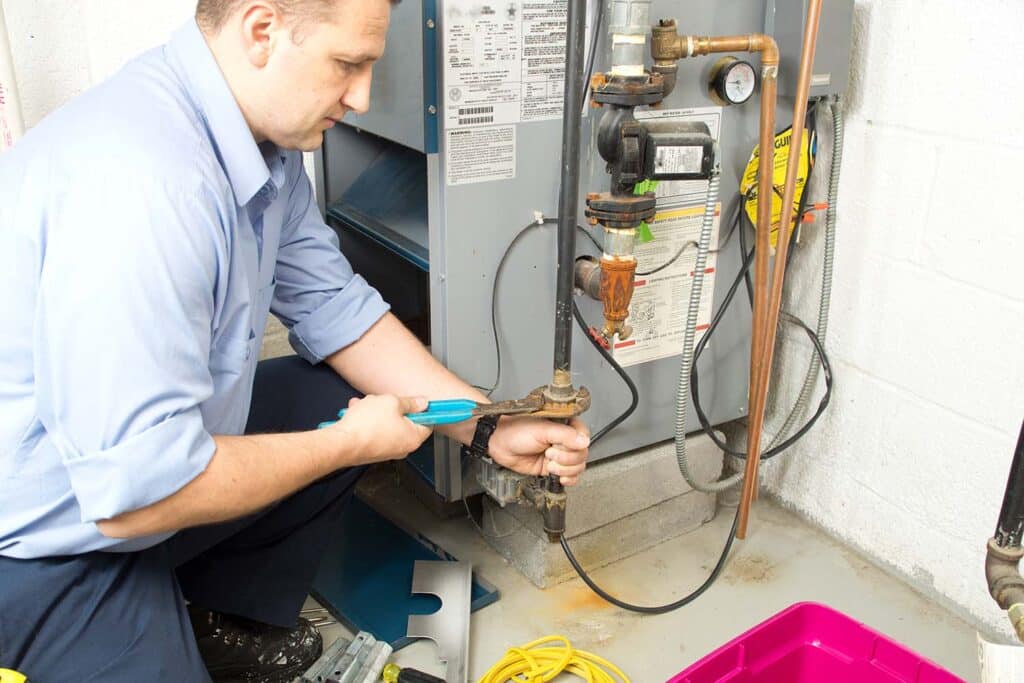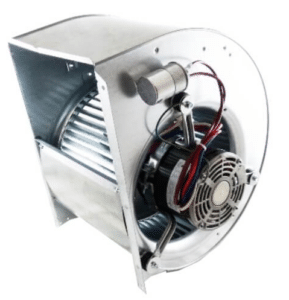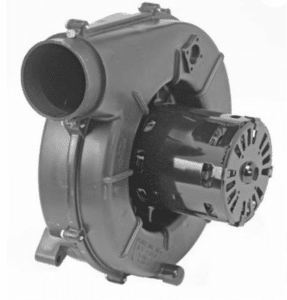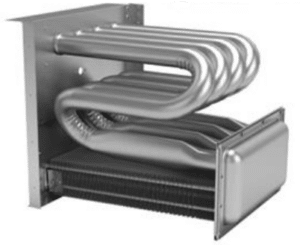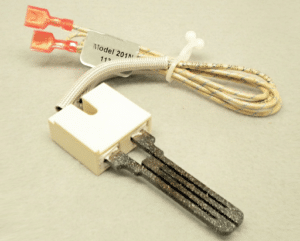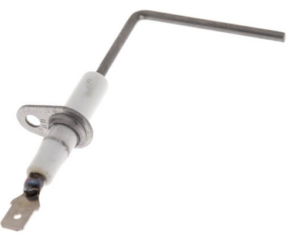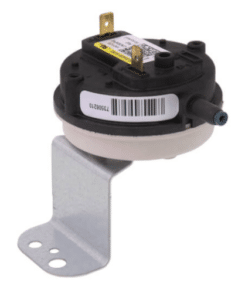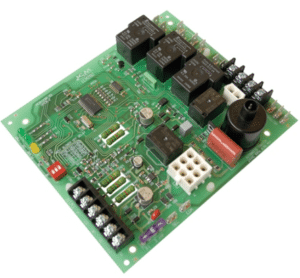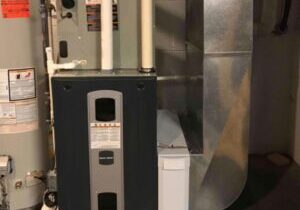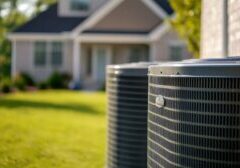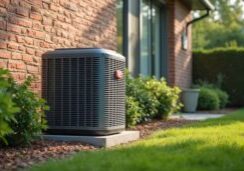As temperatures drop in Sewickley and winter approaches in Southwestern Pennsylvania, the blanket season is short-lived before you reach for the thermostat to fire up your furnace. After sitting idle for months, expecting a smooth startup and operation all winter can be challenging for any system, regardless of age.
With over 20 years of experience, Spurk HVAC has responded to thousands of calls from homeowners in a panic as their furnace fails—often on the coldest days. From our experience, we’ve identified seven common issues that we check for when we arrive on-site. This article will guide you through these problems, how to recognize them, and ways to resolve them quickly.
What Are the Common Warning Signs of a Furnace Issue?
Is your heating system nearing the end of its lifespan? Watch for these warning signs:
- System Age (10+ years)
Most heating systems last 15-20 years, but if your system is ten years or older, consider a replacement. - Difficulty Starting & Frequent Cycling
Your furnace struggles to start or starts and stops too often. - Inconsistent Heating
Uneven temperatures or cold spots in your home. - Cool Air From Vents
- Strange Noises & Odors
Grinding, popping, rattling, or dusty, burning smells could signal mechanical issues or air quality concerns. - Rising Energy Bills
A sudden increase in energy costs could mean your system is becoming less efficient.
If you see any of these signs, it’s best to consult an experienced professional to evaluate your furnace’s condition.
What Are the 7 Most Common Furnace Problems in Sewickley, PA?
1. Failed Blower Motor
A blower motor is a powered fan that circulates air through your furnace, pushing warm air generated by the furnace through ductwork and out the vents into your home. While blower motor failure may seem like a minor inconvenience, it could significantly affect your system’s efficiency and the overall comfort level of your home.
Blower Motor
What to look for:
- Weak or no airflow
- Strange mechanical sounds
- Burning smell
- Higher energy bills
2. Failed Draft Inducer Motor
The venting system channels the combustion gases produced during combustion and safely directs those toxic fumes outside. Ensuring it functions properly is a vital part of our inspection. While the numerous safety features make it highly unlikely for this component to fail and cause harm, failures can still occur. As a result, it’s important not to neglect this aspect of your system.
Inducer Motor
Source: American Standard
What to look for:
- Weak or no airflow
- Strange mechanical sounds
- Burning smell
- Higher energy bills
3. Failed Heat Exchanger
A furnace heat exchanger is a critical component that transfers heat from the combustion process to the air that circulates through your home. It’s a sealed chamber that keeps harmful combustion gases, like carbon monoxide, from mixing with warm air, ensuring safe and efficient heating. If the heat exchanger cracks or fails, it can pose a serious safety risk, allowing harmful gases to leak into your home's air supply.
Heat Exchanger
Source: American Standard
What to look for:
- Carbon monoxide detectors keep going off
- The furnace won’t turn on
- Strange smells
- Soot build-up
- Corrosion
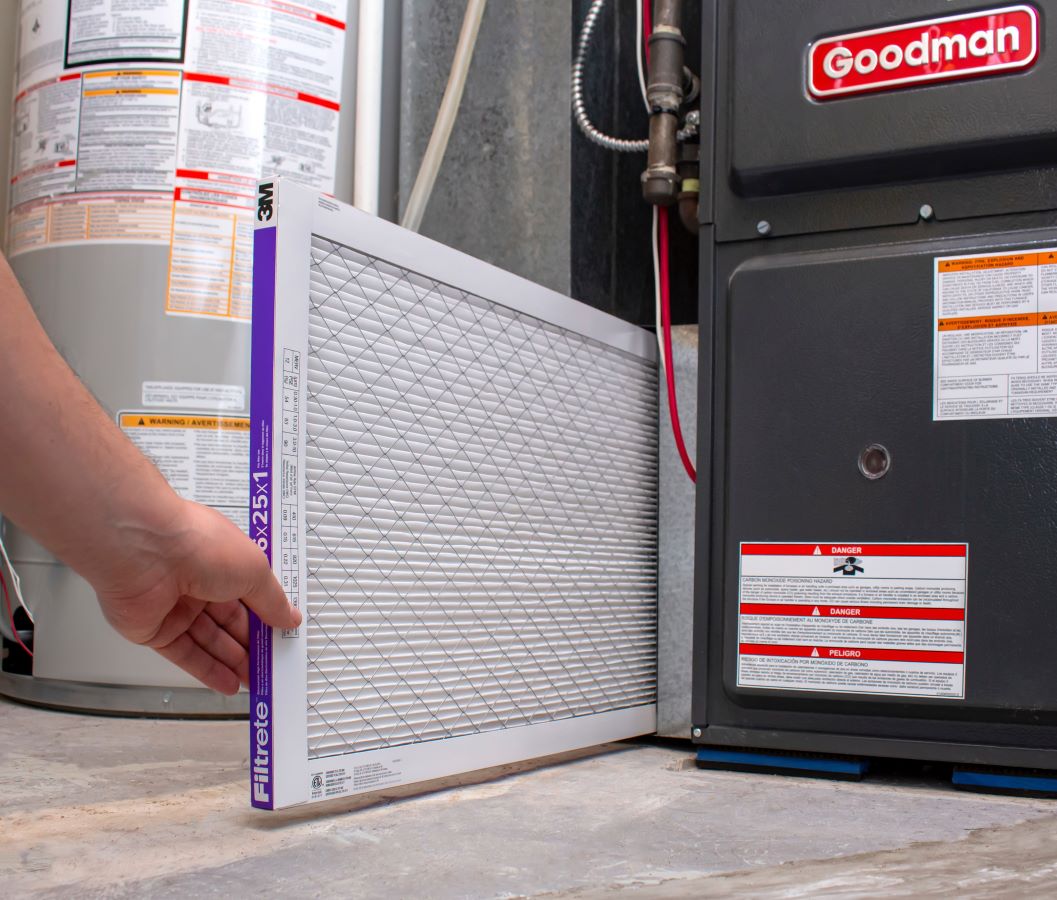
Keep Your Furnace Running Like New
Our 21-point furnace inspection checklist will help with lower energy bills, fewer repairs, and a longer lifespan for your system.
4. Failed Igniter
An igniter is a critical component in your furnace. It transforms fuel into heat by initiating the combustion process that warms the air. If the igniter fails, you’ll quickly notice when your home gets progressively cooler.
A discolored and cracked igniter.
Source: Homeguide
What to look for:
- The furnace won’t turn on
- No heat
- Clicking sounds without a flame
- Frequent cycling
- No glow on the ignitor
- Visible cracks or discoloration on the igniter
5. Flame Sensor & Thermocouple
A flame sensor is a safety device used in furnaces with electronic ignitions. Its main job is to detect if the burners are lit. If they aren't lit, the flame sensor will shut off the gas valve. Flame sensors are often thin, bent metal rods with a porcelain-coated mounting end.
Flame sensor
Similarly, a thermocouple is a safety device used with pilot lights in older furnaces. It senses flame presence by detecting heat through two metal wires that meet at a junction, generating a small electrical current. The thermocouple cools and shuts off the gas valve if the flame goes out.
However, if a thermocouple fails while the pilot light is not lit, gas can leak into your furnace and home, creating a safety risk.
Thermocouple
How to diagnose:
- The furnace won’t turn on
- Frequent furnace shutdowns
- Delayed ignition
- The burner is not lighting correctly
- Clicking sound without a flame
6. Venting Pressure Switch
Another standard safety device in furnaces is the venting pressure switch. This crucial component detects blockages in the venting system that carry harmful gases out of your home. If the vent pipe becomes clogged, a properly functioning pressure switch senses the increased pressure from the inducer motor, indicating a blockage, and shuts down the furnace to prevent gas buildup.
However, if the pressure switch malfunctions, it may fail to detect the blockage, allowing dangerous gases to accumulate in your home and creating a serious safety hazard.
Pressure Switch
How to diagnose:
- Frequent furnace shutdowns
- Lack of heat
7. Control Board
A control board serves as the brain of the furnace, managing critical functions such as ignition, gas valves, flame sensors, and the blower motor. All electrical circuits flow through this component, directing your furnace's operations. Without a control board, the furnace becomes nothing more than a bulky paperweight.
Furnace control board.
Source: Rheem
How to diagnose:
- The furnace won't turn on
- Blower fans run continuously
- Inconsistent heating
- Erratic cycling
- Diagnostic flashing lights
- Burning smell
Take a Proactive Approach: Schedule Annual Furnace Maintenance
Though it’s typically easy to spot your furnace acting up, fixing it can be a whole other story. By taking a proactive approach, you can maintain your system, increase longevity, and avoid costly emergency breakdowns.
At Spurk HVAC, we provide a thorough tune-up that includes our 21-point inspection. We begin by cycling your furnace and conducting a detailed assessment, followed by a comprehensive report. If any component is outside design specifications—affecting energy efficiency, posing a safety risk, or potentially causing property damage—our technician will provide transparent and honest recommendations for addressing the issues.



